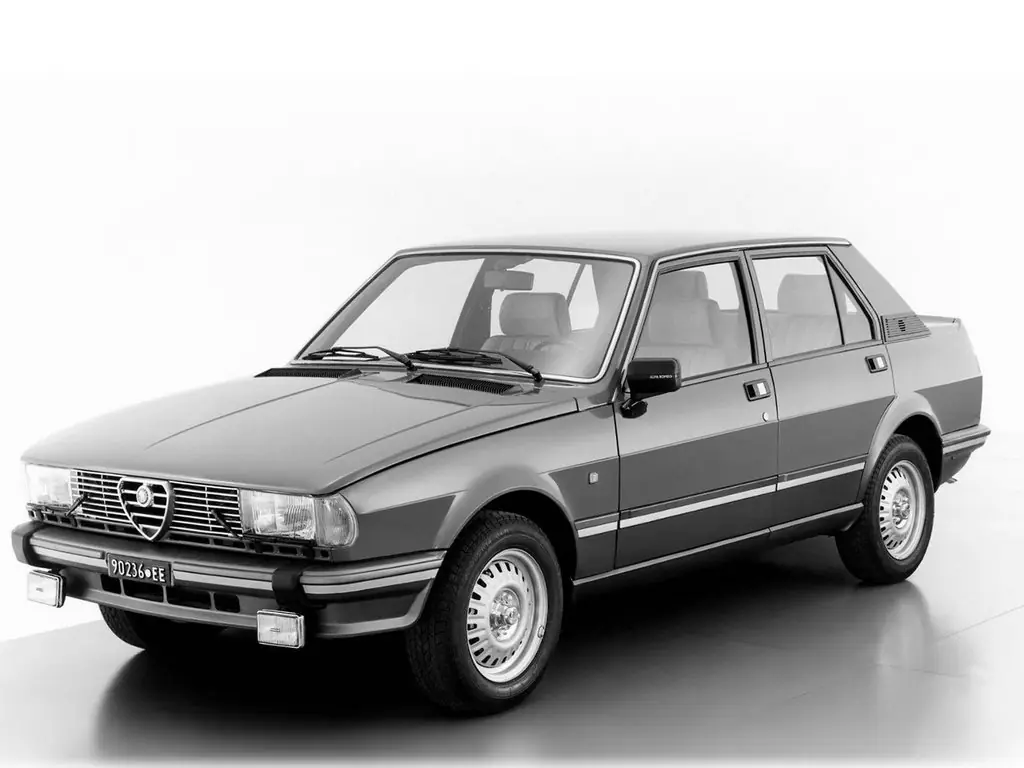The Alfa Romeo Giulietta (116) emerged during a pivotal time in automotive history, when European manufacturers were redefining the sports sedan segment. Released in late 1977, this successor to the beloved original Giulietta carried forward Alfa Romeo’s reputation for building cars that seamlessly blended practicality with driving pleasure. Built on the successful Alfetta platform, it represented a perfect balance between traditional Italian engineering and modern design principles.
Taking the helm as Alfa Romeo’s entry in the competitive mid-size sedan market, the Giulietta (116) proved that practical family cars needn’t sacrifice driving enjoyment. Its arrival marked a significant evolution in Alfa’s lineup, offering sophisticated engineering in a more accessible package than its larger siblings. The car quickly earned recognition for its distinctive character in a market segment dominated by more conservative German offerings.
Italian Flair Meets Functional Design
The Giulietta’s design language spoke volumes about Italian automotive aesthetics of the late 1970s. Clean lines and well-proportioned surfaces created a timeless silhouette that still turns heads today. The front end, with its characteristic Alfa Romeo shield grille, established an assertive presence without being overly aggressive. Meanwhile, the skillfully sculpted body panels reflected light in a way that emphasized the car’s athletic stance.
Inside, the Giulietta demonstrated Italian interior design at its finest. The dashboard layout prioritized driver engagement, with clearly visible instrumentation and intuitive control placement. High-quality materials and attention to detail elevated the cabin atmosphere above many contemporaries.
“My 1983 Giulietta has been in the family for three decades now. The design still looks fresh, and the interior quality is remarkable. Every time I sit behind the wheel, it feels special – something many modern cars lack.” – Michael Rossi, classic Alfa enthusiast
The cabin ergonomics reflected a driver-centric approach, with supportive seats and excellent visibility. The greenhouse design struck an ideal balance between style and functionality, offering good outward visibility while maintaining an elegant roofline. Even by today’s standards, the interior space utilization impresses with its efficiency.
Engineering Excellence
The Giulietta’s technical foundation showcased Alfa Romeo’s engineering prowess. The rear-wheel-drive platform, shared with the larger Alfetta, incorporated several advanced features for its time:
- double wishbone front suspension providing precise steering feedback;
- rear transaxle layout ensuring excellent weight distribution;
- ventilated disc brakes delivering confident stopping power;
- sophisticated rear suspension design enhancing both comfort and handling;
- lightweight construction techniques reducing overall mass.
The engine lineup represented a masterclass in Italian powertrain engineering. The range-topping 2.0-liter variant delivered spirited performance, while the popular 1.6-liter version struck an excellent balance between efficiency and engagement. Each engine showcased Alfa’s expertise in creating responsive, characterful power units.
“Nothing sounds quite like a Giulietta at full throttle. The mechanical symphony from that Italian twin-cam is pure music.” – James Henderson, vintage car collector
The rear transaxle layout created near-perfect weight distribution, resulting in balanced handling characteristics that became a Giulietta trademark. This configuration, combined with well-calibrated suspension geometry, delivered an engaging driving experience that set new standards in its class.
A Lasting Legacy
Time has been kind to the Giulietta (116), with surviving examples increasingly appreciated by collectors and enthusiasts. The model’s influence extends beyond its production years, having helped establish the template for the sports sedan segment. These key factors have contributed to its enduring appeal:
- robust engineering that has stood the test of time;
- distinctive styling that ages gracefully;
- engaging driving dynamics that remain relevant;
- historical significance in Alfa Romeo’s lineup;
- growing recognition in the classic car market.
The Giulietta represents a golden era in Italian automotive design and engineering. Its combination of style, performance, and practicality created a blueprint that influenced sports sedan development for years to come. Today, well-maintained examples command strong interest from collectors who appreciate its historical significance and driving pleasure.
The Final Verdict
Few cars from the late 1970s combine daily usability with driving excitement as effectively as the Giulietta (116). As values of well-preserved examples continue to appreciate, this classic Alfa Romeo increasingly represents both a wise investment and a rewarding ownership experience.
Pros vs Cons
| Advantages | Disadvantages |
|---|---|
| Timeless Italian design with excellent proportions | Parts availability can be challenging |
| Engaging driving dynamics thanks to balanced chassis | Rust protection below contemporary German standards |
| Distinctive engine character with strong performance | Electrical systems require careful maintenance |
| Practical four-door configuration | Some interior materials show age quickly |
| Growing collector appeal | Specialist knowledge often needed for repairs |
| Outstanding weight distribution | Fuel efficiency modest by modern standards |
| Strong community support | Regular maintenance crucial for reliability |
The Alfa Romeo Giulietta (116) stands as a testament to its era’s engineering capabilities while offering an ownership experience that remains rewarding today. Its blend of style, performance, and practicality continues to captivate enthusiasts, making it an increasingly sought-after classic that bridges the gap between everyday usability and driving pleasure.

